Deluxe direct sales
Even if you’ll never be able to able afford one of these rarified beasts (join the club) you’ll still enjoy poring over these stunning superbikes.
The Unno bike range
Unno’s range of mountain bikes contains five models: Ever DH bike, Burn enduro bike, Dash trail bike, Horn XC full sus and Aora XC hardtail.

Unno Ever is a 200mm travel downhill race bike. Available in April 2018.

Unno Burn is 27.5in wheel 160mm travel enduro bike. Frames available now for €5,000.

Unno Dash is a 130mm travel 29er trail bike. Frames available now for €5,000.

Unno Horn is a 100mm travel XC race 29er. Available in September 2018.

Unno Aora is a 29er XC hardtail. Available in July 2018.
Website: unno.com
Unno e-bike in the works?
Interestingly there’s a Work with us section linked to at the footer of the site which not only lists a vacancy for a ‘Senior CFC Aerodynamacist’ (presumably to help develop the next Ever DH bike) but there’s also a job going for an ‘Electronic Development Engineer’ requiring “definition on the engine control units, battery, including related sensor systems and actuating elements” (so maybe an Unno e-bike is in development?)

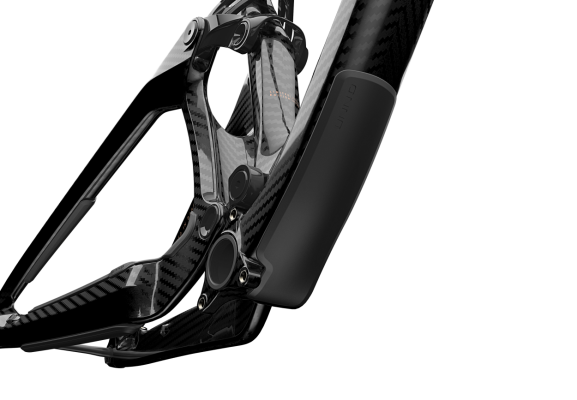
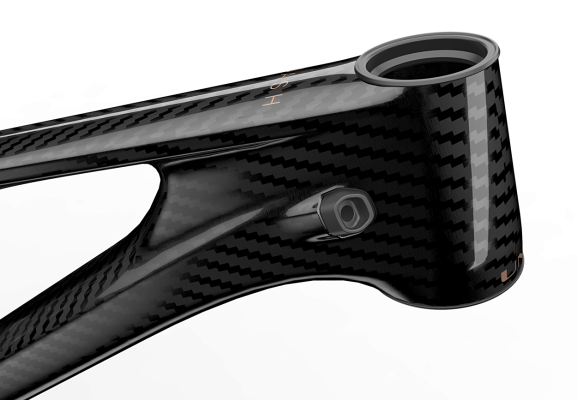
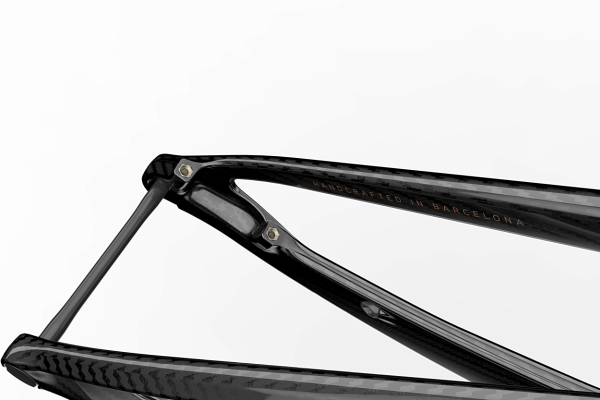
Interview with Cesar Rojo from UNNO bikes
Here’s an interview we did back in 2016 with with Cesar Rojo of UNNO bikes about their eye-catching bikes and ultra progressive geometry.
Pioneer? Extremist? Or both?
Hogar. Home. That place where things work differently, at a different pace, with other standards. Feeling at home is one of the best feelings that exist. We know that. That’s why at UNNO we believe that to be able to produce the most exclusive mountain bikes in the world, we had to do everything in house. Part by part. With our own hands.Controlling the process 100% so that every frame that goes out the door, had entered as raw material through that same door. This way we can control how we use those materials, how we shape them and how we recycle the ones we don’t use. Control. Maximum Control. Because producing a bike is easy, but being able to produce it in the same place where all of us at UNNO live and work, is another thing entirely. People who bring their own ideas, their hands and their hard work to see themselves immersed completely in creating a tool as passionate as a bike. There’s more behind our frames than just a serial number. There’s years of hard work, endless hours of dedication, thousands of kilometers of test rides and an obsessive search for quality. There’s a reason why we’re the only brand in the world that manufactures its frames from cero. From cero to UNNO. The game has changed. Because UNNO means starting from cero.4K version videohttps://www.youtube.com/watch?v=9lDCqnqcPpEVIDEO CREDITS: Mito Echevarría
Posted by UNNO on Sunday, April 17, 2016
UNNO who?
UNNO is a Spanish bike brand who announced themselves to the bike world earlier this year. Their bikes take the ‘long and slack’ principles of modern bike geometry to extremes. XC racing hardtails with 67° head angles, enduro bikes with triple clamp forks, that sort of thing.
YES or NO? With the actual enduro speeds a single crown, wider stanchions, the head tubes are starting to show their…
Posted by UNNO on Wednesday, September 28, 2016
A bit of background
Although only known about widely since a few months ago, the story of UNNO dates back to April 2012 when Cesar first had the idea of “working on a new project with no limitations”. Cesar had already been a bit part of Mondraker’s Forward Geometry principles but he wanted to do something more.
In 2013, the first prototype was made and tested (130mm enduro bike). Other prototypes soon followed; XC hardtail, Downhill bike, XC full suspension.

In 2014 the UNNO name was decided upon. They initially thought about UNO (meaning “one”) but opted for a double-n version to avoid confusion and well, just because.
Also in 2014 they switched around various carbon suppliers trying to find the best option and eventually settled (briefly) with a supplier called Nexus. After too many delays with them, UNNO decided to bite the considerably-sized bullet and get their own carbon fibre production facility.
>>> Size matters: why we’re all riding bikes that are too small
67º HA (8.250gr no pedals as pictured). PART 2: Bar height and CS length (420mm real).Bar height, this is super…
Posted by UNNO on Monday, October 24, 2016
Fast forward to 2016 and UNNO announced themselves to a wider world and start to put extremely intriguing pictures and posts up on their Facebook page. This gets a lot of people talking and asking questions. Us included.
So we fired our questions straight at the main man, Cesar Rojo…
What bike models do you have currently?
Cesar Rojo: “We have five models. A hardtail that is going to be under 850gr, with a very modern geometry. A full suspension XC frame, this is the last one in our development as we want to go really light weight, also with a very modern geometry on it. Then a trail bike 29” with 130mm.
“And finally two bikes with 27.5” wheels – the downhill and our enduro with 160mm. All of our bikes share the same reach of 455mm [on Medium size frames] except the XC bikes that have a bit shorter reach due to longer stems and they sit at 440mm. Your usual Medium size XC bike sits at 410 to 425mm.”

Why is everyone else’s geometry so steep and short?
Cesar: “That is a nice question. I guess lack of testing, just doing the same you did the year before, not questioning how to get things better, not taking risks? It is a hard question to answer, you should ask those guys why there are still doing some old-school geometries when is very clear that that’s not the right path to take.”
What is the biggest misconception about bicycle geometry?
Cesar: “I think there is a million misconceptions and main problem is that each brand has their own marketing (a nice word for BS) about it, so makes it even harder for the customer. If they love one brand they are in love with their marketing ideas too, if love another, they are in love with their marketing.
“One of the most usual [misconceptions] is the XC guys that believe a steep head angle makes a bike more agile and turn better, even climb better… I never felt that I was faster on a XC bike on a very tight twisty trail because of the head angle. In fact I only feel like I can’t keep the bike in a straight line, am uncomfortable with it and very insecure.
“The same thing applies for climbing, the steeper, the harder it is to go in a straight line, when you have a root, rock or something you need to go over you need to lift your front end to avoid getting the bike stuck because of the very steep head angle and narrow trail.
“We at Unno worked very hard to figure out a very good and balanced geometry. We were the pioneers on very long bikes with the Forward Geometry we introduced to Mondraker. And slack bikes for DH too, so we have learnt a lot.
“We changed DH geometries completely with the Summum in 2010, while everyone was doing 66/65° head angle DH bikes we did one with 63º. When bikes were super short we came with a medium bike based on a XL frame.
“Now everyone is following what we did, so we should know a thing or two. With Unno we took all these years of testing and experience and we started from scratch.
“When you see our XC bikes and our trail bike, the geometry is so different to others, you need to ride one of our bikes and you will not want to go back to your own bike.”
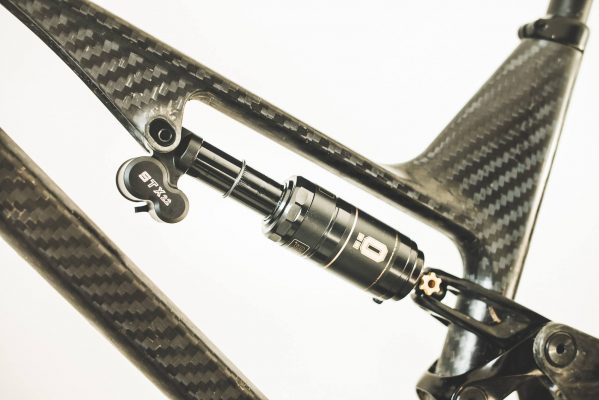
What does the future hold for mainstream mountain bike geometry?
Cesar: “Check our bikes and you will see the future of XC and trail 29”. Just put a reminder in your agenda in five years to check back on geometries.”
Do you need to be a very skilled rider for Unno geometry to work?
Cesar: “In our development team there is so many different riders and all say [UNNO geometry] benefits them in one or another way compared to their own bike.
“Our bikes are in between usual L and XL from some brands. Mondraker’s Small bikes are longer than most L/XL bikes but they are still quite steep. So we mixed the best of both worlds. Longer and slacker to get a bike that you will get used to very quick and will give you so much confidence due to the more slack geometry (even if we really haven’t gone that slack). So for us after having done so many geometry experiments in the past five years and changing the market, this is for us how the bikes should be from now on.”
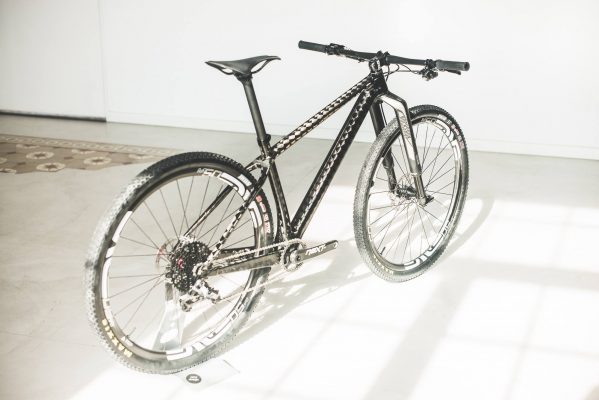
Are climbing and descending opposite sides of the same coin?
Cesar: “Well, in the end it is the same. You want better traction and you want bump absorption going up and down. Pedal efficiency is important, but that is why you need a good suspension. Of course speeds and percentage of pedalling going up and down are different.
“Going down, let’s imagine you pedal 15%. While going up, you pedal 95% of the time. So efficiency makes more difference when going up. Also going down, bump absorption is much more important that going up, so less travel going up is not a problem (though it’s only an advantage because of the lighter weight of shorter travel bikes due to their components).
“So going up, pedal efficiency makes a difference. Going down, is not that big of a deal. It’s what you want your bike for. Climbing good, going down good, or both. Then you have your bike sorted.”
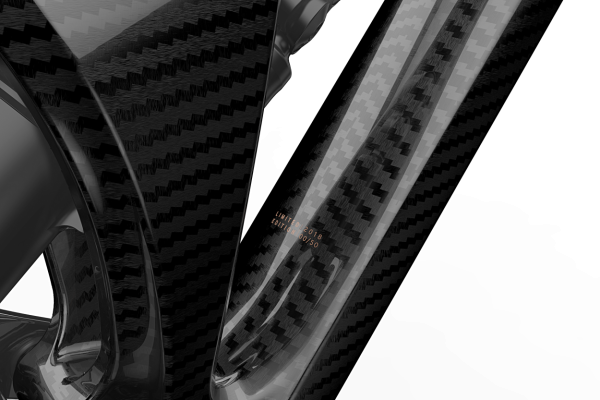
What suspension design does each UNNO bike have and why?
Cesar: “We have a dual link (pat pending) design. We share the same system through the entire platform. It’s an evolution of what we have learned from developing the Zero system for Mondraker in terms of ratio. We developed it specially having in mind air shocks – even for DH – as we totally believe in them.
“Anti-squat is optimised for 1x transmissions around a 30 to 34T front ring, except the DH frame which is around a 34 to 38T.”
Are there ideal amounts of travel for each discipline?
Cesar: “Difficult question. XC I believe is about weight, so you have not many options to make a light bike other than use 100mm travel because of the components available. Sure, a little more could do, but I would say it’s fine even more with no suspension on the back and good geo.
“Downhill… 180.. to 200mm is already proven and very good. So I believe trail/enduro is the one more broad…
“Trail, Enduro… I don’t think is a fixed amount. Anything from 130mm to 160mm with a nice suspension – depending on the wheels – will do.”

What have been the highlights and low-points so far?
Cesar: “Highlights is everything. From being able to not be restricted in any way, to being able to do everything in house. But the highest highlight is building a dream, something that we believe is quite unique for a brand starting from zero.
“Low’s? We just wish it was more easy and fast. But doing things good is not fast, quick or easy. But we never give up. We are almost there.”

Any plans for cheaper, aluminium UNNO bikes?
Cesar: “No aluminium on our plans. We want to manufacture here everything and we don’t plan in investing in aluminium. Our focus is on composites and is how will continue to be.”

What’s next for UNNO?
Cesar: “Selling our initial bikes. And then basically thinking how we can make bikes better. We probably have the largest R&D in the whole bicycle industry with over thirty designers and engineers, so we want to take an advantage of that. Being able to get knowledge from different industries we work for.
“We will be focusing on making things better. But how? You will have to wait to see that one. The ideas are there, just wait a bit.”




